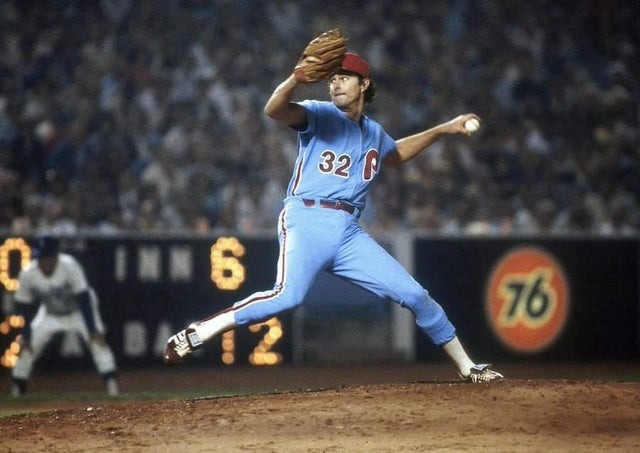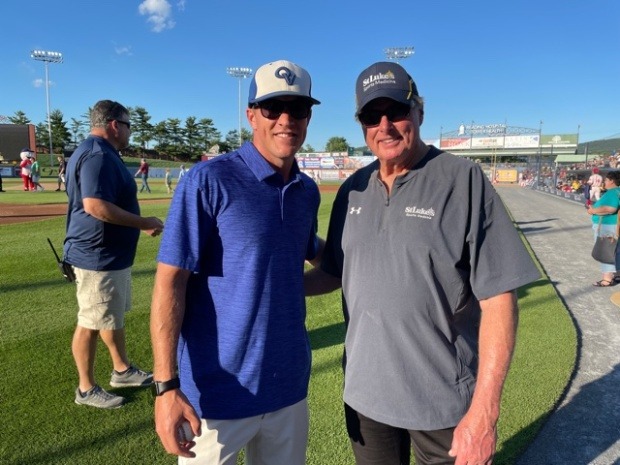Steve Carlton – Pitcher’s Workhorse
Left-handed pitcher Steve Carlton was the last workhorse of the mound. His 24-year career (1965-1988) included a four-year stretch during which he averaged more than 300 points. In 1972, he started 41 games and completed 30 of them. His career record of 329-244 and 3.32 ERA earned him election to the Hall of Fame in 1994. But few people really knew him. – Norman L. Macht

For most of his career, Steve Carlton has had problems. It seems he worked more on his pitch than on his image–an unforgivable mistake in the media era.
Nothing so clearly defined the difference between his public and private images as the names by which he was known. The press always called him Steve, but to his teammates he was Left-handed.
Colorful lefties like Grove and Gomez attracted the label of Lefties because they made hot lines or told good jokes. Many fans didn’t even know they had real names.
But Steve Carlton refused to talk to reporters for eight, 10 or 13 years, depending on who counts. He was Silent, a Monk, a Hermit. Why? Because he didn’t show any emotion on the field? Because he didn’t make a colorful copy? Because all he did was work hard to become probably the best left-hander in history? Would it have been different if he had given fans a chance to get to know a real Lefty – one of the smartest, well-read, interesting people who have ever challenged strikers?
Carlton has always been shrouded in mystery. But that same stone wall of concentration and self-discipline–combined with the deadliest slider a pitcher has ever thrown–is what got him into the Hall of Fame on the first ballot.
“He had the strongest concentration I’ve ever had as an athlete,” said Keith Moreland, the Phillies’ catcher at the 1980 World Series. “He had the ability to disconnect from everything. I think sometimes he was so deep into it that he didn’t even know who the attacker was.”

Herm Starrett, Philadelphia’s pitching coach during Carlton’s heyday, also recalled Lefty as stoic after the game.
“Regardless of whether he pitched a no-hitter or something else,” Starrett said reverently, “when the game was over and you congratulated him, he told you it was the past. He was already preparing for the next game.”
First of all, Lefty was the most successful self-made pitcher. When he first got to the Cardinals in 1965, it seemed that nothing would work out for him. “He was a tall [6-4] skinny guy with a good figure, but not a very fast ball,” recalled Nellie Briles, his rookie roommate. “The Cardinals retired him in ’66. Then he was invited to the Hall of Fame game in Cooperstown [he beat the Twins 7-5, going all the way], and he never backed down. He gained over 200 pounds and developed this slider.”
Carlton was traded to the Phillies for Rick Wise after the 1971 season. It was a fatal franchise mistake for St. Louis. Carlton won 237 games for the Phillies (1972-85), winning four Cy Young Awards. In 1972, his 27 wins accounted for almost 46 percent of the club’s last-place wins.
And all thanks to this slider. More than anyone else in baseball, Carlton has turned that nickel curve into a million-dollar pitch.
“He had a bad bite,” Moreland recalled. “Many sliders just break sideways. It not only skidded, but also broke at an angle. And he dropped it faster than anyone else–85 plus.
“He could throw it outside, break it and throw it around the corner, or throw it down and inside. He batted with his right hand and just ate them. Ninety percent of his strikeouts were down-and-in sliders. The guys swung at him when he fell to the ground.”
Carlton’s composure startled Moreland. “You could catch some of [his serves] with tweezers. He could pinpoint that fastball on the outside corner and then hit it with a slider.”
Catching Carlton with the Cardinals and Phillies, Tim McCarver stated: “I’ve dropped three fingers [the slider sign] so many times that I’ve stuck out three fingers when shaking people’s hands.”

The last of the pitchers with 300 IP (304 in 1980), Carlton was still good for 284 innings at age 39. But he was not inclined to numbers. Completed games and served innings were random. In his early years, he was an annual leader in complete games when his cast was sparse. But later in his career, if he had a big advantage after seven or eight innings, he would invite the pitching coach to bring someone from the bullpen who needed some work.
On the day he was supposed to pitch, Carlton went into his shell, focusing on his game plan, step by step. The young throwers who watched him didn’t try to copy his strict regime, but they left impressed by his dedication and discipline.
Like Early Wynne, who sprinted on the last day of the season, Lefty Carlton served his last striker as if his entire career was at stake. He didn’t know any other way.